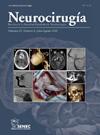Missed diagnosis; non-traumatic retroclival haematoma in adults, brief case report with review and evaluation of similar cases in the literature
IF 0.8
4区 医学
Q4 NEUROSCIENCES
引用次数: 0
Abstract
Retroclival subdural haematomas (RSH) are a rare occurrence, accounting for 0.3% of acute extra-axial haematomas. Although typically associated with trauma, non-traumatic causes include coagulopathy, pituitary apoplexy and vascular anomalies.The presence of cases due to non-traumatic causes can present significant diagnostic challenges. This article aims to shed light on the intricacies of non-traumatic RSH by conducting a review of the literature and presenting a case study of a 74-year-old woman on anticoagulants. The primary objective is to enhance our understanding of the diagnosis and treatment of this condition, emphasising the significance of bleeding in a location that often goes unnoticed, particularly in Computed Tomography (CT) scans, with the exception of trauma. A comprehensive review of the literature revealed 28 cases of non-traumatic RSH in adults. A detailed analysis was conducted on the demographic characteristics, causes, presentations and outcomes of these cases.The mean patient age was found to be 59 years, with a slight male predominance of 57.57%. The primary causes were identified as pituitary apoplexy (39.28%) and anticoagulants (21.42%), while 25% of cases had an unknown aetiology. Spinal canal extension occurred in 10.71% of cases, which increased morbidity.The recovery rate was 92.85% and the mortality rate was 3.57%.Non-traumatic RSH is under-recognised and often missed on standard imaging.Conservative treatment is effective without spinal cord compression.Awareness is very important, especially for diagnosis and treatment.
错过了诊断;成人非外伤性斜坡后血肿,简要病例报告,回顾和评价文献中类似病例
斜坡后硬膜下血肿(RSH)是一种罕见的现象,占急性轴外血肿的0.3%。虽然通常与创伤有关,但非创伤性原因包括凝血功能障碍、垂体中风和血管异常。由于非创伤性原因导致的病例的存在可以提出重大的诊断挑战。本文旨在通过回顾文献并介绍一位74岁妇女使用抗凝剂的病例研究,阐明非创伤性RSH的复杂性。主要目的是提高我们对这种疾病的诊断和治疗的理解,强调出血部位的重要性,特别是在计算机断层扫描(CT)扫描中,创伤除外。对文献的全面回顾揭示了28例成人非创伤性RSH。对这些病例的人口学特征、原因、表现和结果进行了详细分析。患者平均年龄59岁,男性略占优势,占57.57%。主要病因为垂体性中风(39.28%)和抗凝剂(21.42%),另有25%的病例病因不明。10.71%的病例发生椎管延伸,增加了发病率。回收率为92.85%,死亡率为3.57%。非创伤性RSH在标准影像学上未被充分认识和经常遗漏。保守治疗不压迫脊髓是有效的。意识是非常重要的,尤其是在诊断和治疗方面。
本文章由计算机程序翻译,如有差异,请以英文原文为准。
求助全文
约1分钟内获得全文
求助全文
来源期刊

Neurocirugia
医学-神经科学
CiteScore
1.30
自引率
0.00%
发文量
67
审稿时长
60 days
期刊介绍:
Neurocirugía is the official Journal of the Spanish Society of Neurosurgery (SENEC). It is published every 2 months (6 issues per year). Neurocirugía will consider for publication, original clinical and experimental scientific works associated with neurosurgery and other related neurological sciences.
All manuscripts are submitted for review by experts in the field (peer review) and are carried out anonymously (double blind). The Journal accepts works written in Spanish or English.
 求助内容:
求助内容: 应助结果提醒方式:
应助结果提醒方式:


